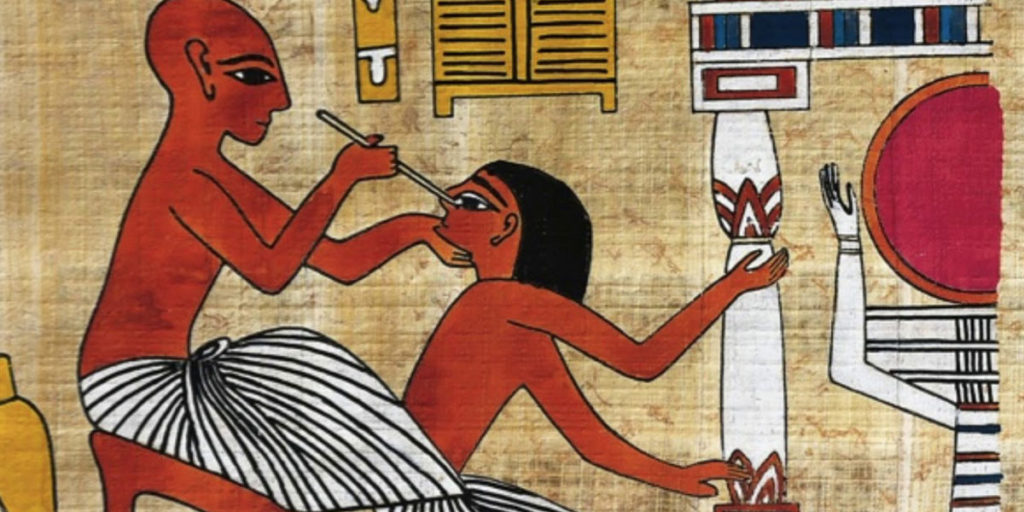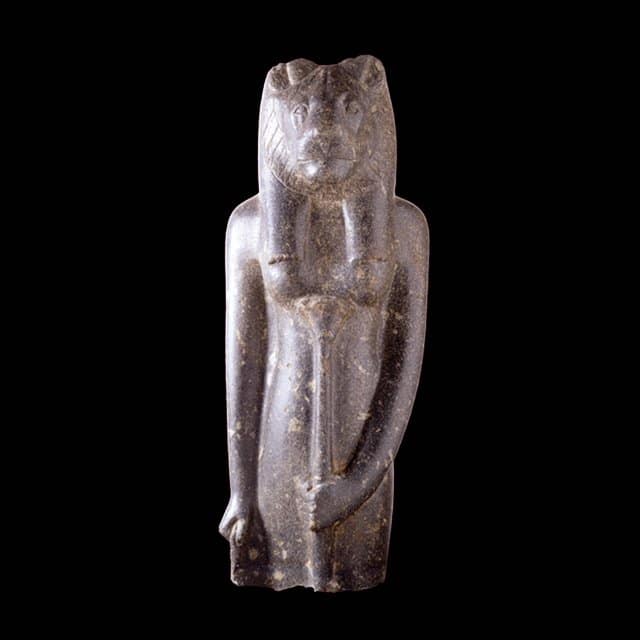Ancient Egypt may have lacked many things that we take for granted today, such as wheels and coins. But that civilization spawned countless inventions and innovations that shaped the ancient world.
This article will move chronologically through the most important inventions of Ancient Egypt.
Prehistoric Egypt
The area around the Nile has been inhabited for all of human history and then some. Hominids capable of making stone tools have lived there for over one million years.
Some of the earliest structures ever discovered were constructed in Egypt around 100,000 BC.
Early humans used flat stone slabs to create rings that supported structures made of animal skins or plant materials. These semi-permanent homes could be disassembled and moved by hunter-gatherers.
Sickles, Grinding Stones, and Games
People living around the Nile became gradually more settled. Early agriculture began in this region around 15,000 years ago.
The Qadan culture in Upper Egypt (the southern area that is upriver from Lower Egypt) may have been the first culture in the world to invent sickles for harvesting grain. They also invented grinding stones independently of other cultures that used them.
Early farmers were vulnerable to attack from groups of hunter-gatherers. Although they persisted for approximately four thousand years, the Qadan culture disappeared around 10,000 BC.
Arrowheads first appeared in Egypt around 6000 BC. Weaving was also invented around this time.
Ancient tombs dated to 5200 BC held linen balls and nine-shaped stones: a bowling-style game buried alongside a child. Other balls were made of leather stuffed with cornhusks and bound with string.
Predynastic Egypt
The first pottery began to appear around 5000 BC, around the same time that people in this area began keeping animals such as goats, sheep, pigs, and cattle.
Domesticated dogs had already existed for quite some time. One image created in Egypt nearly six thousand years ago depicts a man walking his dog on a leash.
The Maadi culture started making copper tools around 4000 BC, including adzes. Art began to take off around this time. Pottery became increasingly ornamental. Egyptian faience (a process of coating pottery in brightly colored, glassy enamels) was invented.
Copper tools became increasingly common, and copper weapons began to appear around 3500 BC. Cities grew significantly, with as many as five thousand people living all together. People began building with mud bricks instead of more portable materials such as reeds.
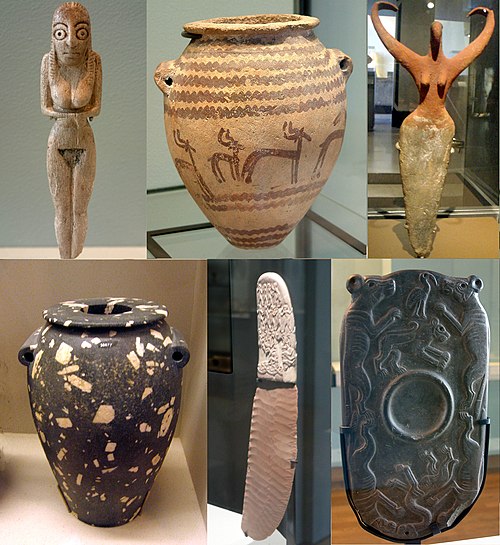
The discovery of well over one hundred animal skeletons at a burial site near Hierakonpolis points to the existence of the world’s first zoo (likely a private menagerie). This was created around 3500 BC.
At the time, this area was Egypt’s largest urban center. Animals buried alongside the city’s rulers include elephants, hippos, baboons, wildcats, and dogs. The diet of these animals suggests that they were fed by humans. Some show healed bones indicative of life in captivity.
Beekeeping began in this time period as well. Neolithic cultures in the area used artificial hives made out of pottery vessels, woven baskets, and wooden boxes.
The first wigs date back to prehistoric Egypt. Beeswax was commonly used to keep them in place. The oldest wig ever found dates back to 3400 BC.
Egyptians commonly shaved their heads to prevent lice, and then used wigs to protect their heads from the scorching Egyptian sun. Many people wore wigs made from wool or plant fibers, while the upper class wore wigs made of human hair.
This practice also led to the world’s first barbers. Records from the very beginning of the Predynastic Period document men who were hired to cut and shave hair with tools made of flint and shell. By the end of this period, many wealthy Egyptians had live-in barbers among their servants.
The first makeup also dates back to this time, or possibly even as early as Neolithic Egypt. By the Predynastic Period, Egyptians of all social classes wore a colored pigment called kohl around their eyes.
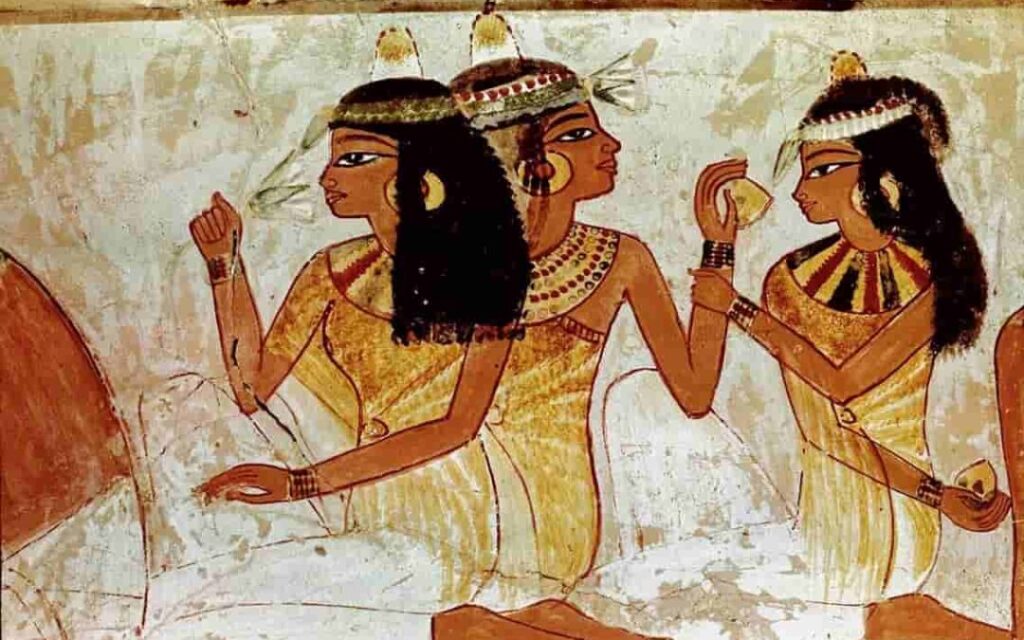
Green kohl was most common in predynastic times and was eventually replaced by black kohl. Kohl had medicinal properties, repelled flies, and helped to protect eyes from intense sunlight.
The earliest evidence of a numeral system dates back to 3200 BC. Ivory labels found in a tomb in one of the oldest cities in Ancient Egypt were used as tags for grave goods.
Egypt – that is, the many civilizations living along the Nile River – was unified in the Protodynastic Period around 3200 BC.
Early Dynastic Period
Also called the Archaic Period, this era begins with the unification of Upper and Lower Egypt by King Narmer around 3150 BC.
During this time period, the elite began constructing tombs called mastabas. These rectangular buildings with inward-sloping walls were the predecessors of pyramids. These were some of the earliest stone monuments ever constructed.
The first Egyptian writing system developed during this period from a handful of symbols to a system of over two hundred phonograms and ideograms.
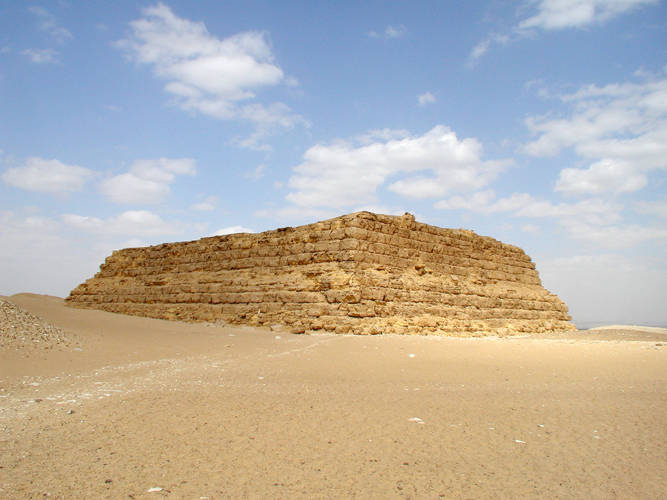
Units of Measurement
The Ancient Egyptian civilization was one of the first in the world to use a standardized system of measurement. They used standard units to measure and record important information, such as the level of the Nile River throughout the year.
The system of measurement used during the Early Dynastic Period was based on parts of the body. The smallest unit represented the breadth of a finger.
Four fingers were equal to one palm, and five were equal to one handsbreadth. Cubits, another common unit, were equal to seven palms.
There are also land records from this period that used regular units for area. Land was measured in square cubits.
We also see the first evidence for standardized weight units during this period. Although the earliest weighing stones ever found originated in the Old Kingdom, Egyptolists believe that a weight unit called a deben was already in use during the Early Dynastic Period.
Tomb paintings from the end of this period show balance beams and weighing stones.
Early Ships
The world’s first planked boats were constructed in Egypt around 3000 BC. Cloth sails appeared even earlier – in Predynastic Egypt around 3300 BC.
Stern-mounted steering oars – the predecessor of modern rudders – were commonly used in Egypt even before that.
The earliest known harbors were created in Egypt towards the end of the Early Dynastic Period.
Old Kingdom
This period spans from 2700 BC to 2200 BC.
The world’s first paved road may have been created early in this period. The oldest road ever discovered was found in Faiyum.
Architecture progressed rapidly in the Old Kingdom from step pyramids to the great pyramids at Giza. Their stone interiors were quarried close to the building site, and their exteriors were made of fine white limestone transported from the other side of the Nile.
Egyptian priests told the Greek historian Herodotus that “the Great Pyramid had taken 400,000 men 20 years to build, working in three-month shifts 100,000 men at a time.”
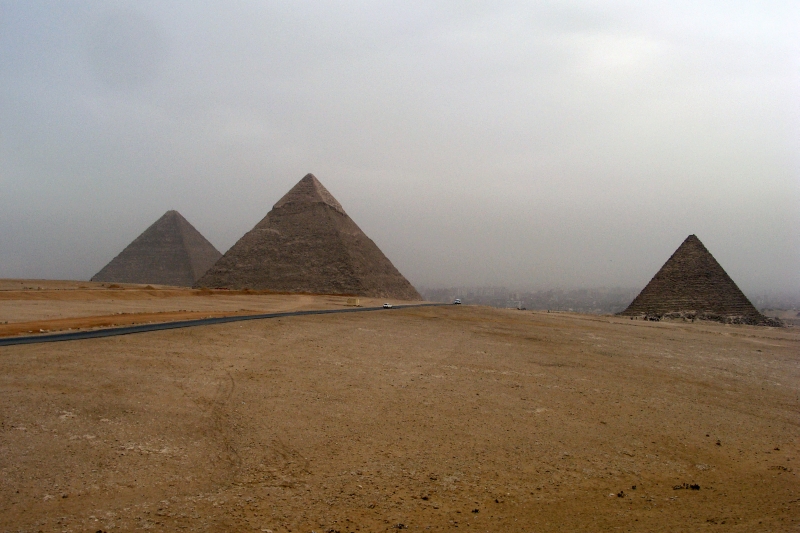
Ancient Egyptians were expert stonemasons. In addition to the Pyramids, many lifelike stone sculptures were created during this time.
Bees were domesticated at this time, and they appear in Old Kingdom art. One temple wall shows workers blowing smoke into the hives so that they can collect honeycomb.
Some scholars have suggested that the first police force can be traced back to Old Kingdom Egypt. During the Fourth or Fifth Dynasty, the government began to select men from the military to patrol public areas. Trained monkeys and dogs that would help them to apprehend thieves in marketplaces.
The Invention of Paper
Papyrus may have been invented even before the Early Dynastic Period. The oldest papyrus ever found was created during the Fourth Dynasty, around 4500 years ago.
Papyrus is thicker than paper. Paper is made from pulped plant fiber as opposed to thin strips from the papyrus plant. But scraps found alongside papyrus suggest that ancient Egyptians were manufacturing paper as well.
The hieratic hieroglyphs found on the oldest pieces of papyrus ever discovered document the transportation of limestone blocks by boat from their quarries to construction sites in Giza. This white stone was probably used to create the outer layer of the Great Pyramid.
Alongside papyrus, ancient Egyptians invented the world’s first ink. They mixed carbon from charcoal or soot with beeswax or gum arabic to create smooth black ink. They also used ocher to create red ink.
The Egyptian Calendar
While the ancient Egyptian calendar, a solar calendar with a 365-day year, has its roots in prehistoric Egypt, a civil calendar was first established during the Old Kingdom Period. Careful observation of the stars was necessary to anticipate the annual flooding of the Nile.
Ancient Egyptians divided the year into three seasons:
- Inundation, the time from September to January when the Nile would flood
- Emergence from January to May
- Low Water, the season of the summer harvest
During this period, the months were numbered according to the season: First Month of Emergence and so on.
Their calendar year was divided into 12 months, which had 30 days each. Each month was divided into three ten-day periods called decans. The additional period of five days was a major religious holiday celebrated in anticipation of each year’s flood.
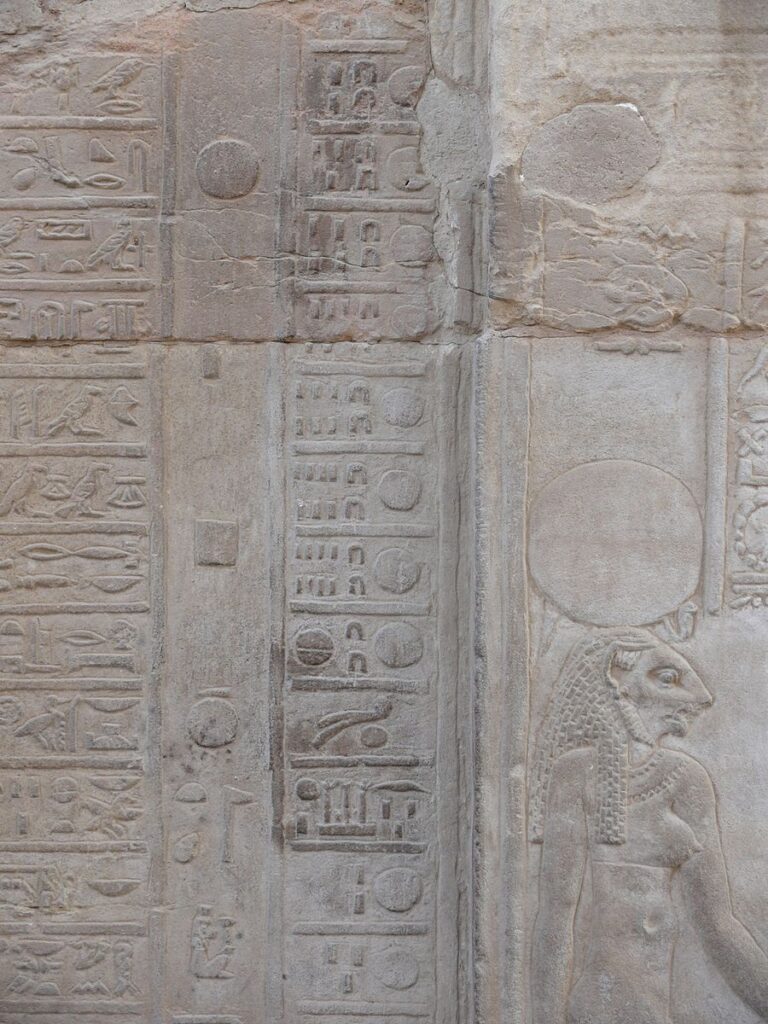
First Intermediate Period
Little is known about the history of Egypt from 2181 BC to 2055 BC. A period of chaos and infighting followed the collapse of the Old Kingdom, which may have declined due to low flood levels and subsequent famines.
Though no great architectural marvels arose during this time, there was one important development: the invention of literature. Although the earliest surviving works of literature were written during the Middle Kingdom, scholars believe that the practices that led to these early stories and poems originated during this era.
The many battles of this period also spurred inventions on that front, such as mobile siege towers.
Middle Kingdom
The Middle Kingdom began with the reunification of Egypt under the reign of Mentuhotep II in 2040 BC. He reigned for over fifty years and passed the unified nation on to his son, who continued to consolidate power.
The First Standing Army
The pharaohs of the Twelfth Dynasty in ancient Egypt may have been the first rulers in history to maintain well-trained standing armies. These professional soldiers manned extensive fortifications and defended the kingdom.
Borders were highly fortified and staunchly defended. In times of war, these standing armies served as the base of larger forces supplemented by ordinary citizens. Professional soldiers also accompanied trade delegations.
Battle rams may also have been invented during this period, or even earlier. The earliest depiction of a battering ram was found in the tomb of a noble from this period.
A famous fortress was built at an old colonial town called Buhen during the Middle Kingdom. Over three thousand people lived within its walls.
It was the first of eight fortresses located along the Nile in the southernmost part of the kingdom. Each of them was within signaling distance of the other.
Buhen’s fortifications included a deep moat, massive stone walls, drawbridges, ramparts, buttresses, bastions, battlements, double rows of loopholes (narrow windows for shooting arrows), and a catapult.
The Oldest Surviving Literature
Stories and songs are both fundamental to who we are as humans. There’s no knowing how early in our history these oral traditions began. But literature – the written stories and poems of humankind – seem to have originated in Ancient Egypt.
Scribes in the Old Kingdom wrote things down for practical and religious purposes. But the first true works of literature date from the Twelfth Dynasty.
The oldest story ever discovered is the “Tale of the Shipwrecked Sailor“, which was written as early as 2500 BC. It is thought to be roughly five hundred years older than the Epic of Gilgamesh. The pharaoh in the story ruled Egypt around 2000 BC.
“When Pharaoh Amen-em-het ruled Egypt,” the story begins, “he brought peace and prosperity to a country that had been torn by civil war and rebellion for nearly two hundred years.”
It goes on to tell of a sailor who was washed overboard and wound up on an island with only a giant serpent for company. Eventually, the ship returns for him, and he goes home with many expensive gifts from the serpent to his people.
This story was written in Hieratic script, which was most often used on papyrus. The word Hieratic derives from a term meaning ‘priestly writing’ because this script was first used for religious texts. It originated in the Early Dynastic Period and remained in use for thousands of years.
This period also produced early philosophical works such as The Debate Between a Man and His Soul, in which a man argues with his Ba – the portion of the soul that represents his personality or his psyche.
The man is eager to reach the afterlife and be done with the evil and hardship of this world, but his soul urges him to persist and not wish for his life to end before its time.
Other important nonfiction works also originated in the Middle Kingdom. An ancient papyrus document created before 1900 BC touches on mathematics, human medicine, and veterinary science. The medical section deals with gynecology, pregnancy, and newborns.
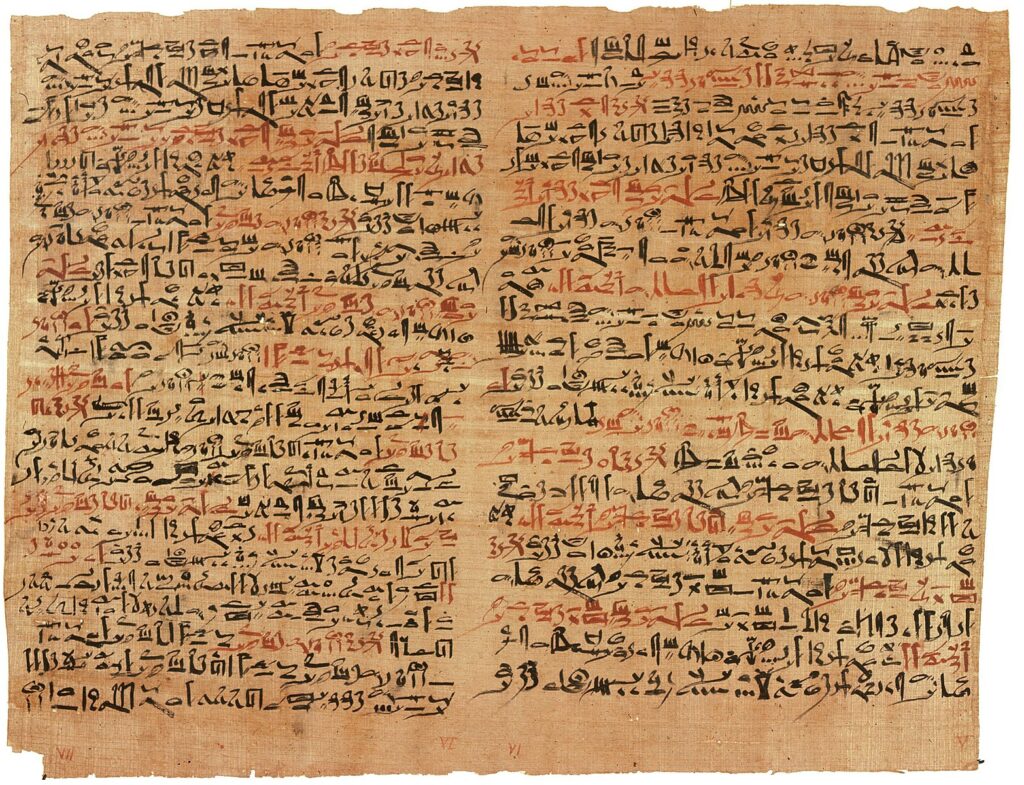
Second Intermediate Period
The Second Intermediate Period from 1700 BC to 1550 BC marked another division between Upper and Lower Egypt following years of famine and illness.
Mathematical papyruses dating from this period demonstrate an advanced understanding of arithmetic, algebra, and geometry. Ancient Egyptians used formulas that allowed them to calculate the volume of both cylindrical and rectangular granaries as well as the volume of a pyramid.
They were also able to find the area of a circle by using 256/81 as an approximate value for pi.
Medicine
The earliest medical texts ever discovered date back to this period in Ancient Egypt.
The Edwin Smith Papyrus from 1600 BC is the oldest known treatise on trauma surgery. It’s a transcription of an older text that may have been written as early as 3000 BC.
It includes 48 cases of injuries that include wounds, fractures, dislocations, tumors, and a broken nose. The treatments described include sutures, bandages, splints, poultices, immobilization for head trauma and spinal cord injuries, and honey for infections.
The Ebers Papyrus, written around 1550 BC and most likely copied from earlier texts, is a 20-meter scroll. It lists over 700 remedies and incantations.
A section called the Book of Hearts delves into mental disorders such as depression and dementia. Other chapters deal with contraception, pregnancy, parasites, tumors, dentistry, bone-setting, diabetes, and burns.
The Brugsch Papyrus, written around 1300 BC, contained 24 pages and touched on topics such as contraception and pregnancy tests.
The London Medical Papyrus written around the same time contains 61 recipes that combine the medical with the magical. Ancient Egyptians made little to no distinction between science and religion. The recipes offer help for skin complaints, eye conditions, burns, and the prevention of miscarriages.
Other Egyptian medical inventions include scalpels, scissors, needles, forceps, lancets, adhesive bandages, prosthetics, tampons, and tooth powder.
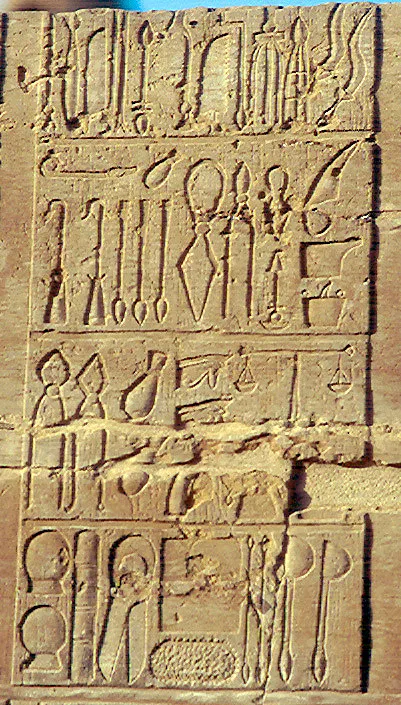
New Kingdom
The New Kingdom began around 1570 BC and endured for five hundred years.
Ahmose I founded the Eighteenth Dynasty. He retook the fortress at Buhen, and conquered Lower Egypt, thereby reunifying the country.
There was a resurgence of trade under his leadership. He reopened abandoned mines and quarries, and began the greatest construction projects to have been undertaken in centuries.
He built the last pyramid ever constructed as part of a mortuary complex in Egypt. The sides of it were steeper than those of the great pyramids, but only ruins remain.
Glass may have been invented during the reign of Ahmose I. Glass beads began to appear shortly thereafter. By 1500 BC, Egyptian glassmakers were producing multi-colored vessels and the world’s first perfume bottles.
The world’s first sundials were also invented during the reign of Ahmose I. They were preceded by simpler varieties of shadow clocks. Ancient Egyptians may have used them for an additional two thousand years before the creation of the earliest surviving sundial.

The first water clocks were created in Egypt around 1400 BC. They were stone vessels with sloped sides and a hole in the bottom that allowed water to drip out at a consistent rate. Markings on the inside measured the passage of time as water drained.
Navel rams originated in this period. They served to puncture enemy ships. Grappling hooks were also used in naval combat.
The oldest horse stables ever excavated date back to New Kingdom Egypt. Ramesses the Great established massive stables that could contain nearly five hundred horses at one time.
The oldest surviving geological map was created in Egypt around 1150 BC. The Turin Papyrus Map depicts an area that held both a stone quarry and a gold mine. There is no record of another geological map being created for another three millennia.
The End of Ancient Egypt
The Third Intermediate Period began in 1077 BC with the death of Pharaoh Ramesses XI. Subsequent pharaohs lost control over Middle and Upper Egypt, which were ruled by the High Priests of Amun.
This period of history was not nearly as dark or chaotic as the first two Intermediate Periods. Shoshenq I began the Twenty-second Dynasty and reunified the country around 945 BC and ushered in over one hundred years of stability.
Later in the period, Nubian rulers took advantage of further political instability to subsume Egypt into their empires.
The Late Period began around 664 BC with the first pharaoh of the Saite Dynasty, which was the Twenty-sixth Dynasty of Egypt. The Egyptian pharaoh Wahibre Psamtik I reunified the country and his successors expanded their empire, annexing Cyprus and other lands.
Towards the end of the Late Period, Egypt was ruled by the Persian Empire under Persian-controlled Egypt. It was conquered by Alexander the Great in 332 BC.
The Ptolemaic Kingdom of Egypt began in 305 BC under the rule of the Macedonian general Ptolemy I Soter, who succeeded Alexander the Great. It ended with Cleopatra when Egypt was conquered by Rome.
